A way to calm and focus or energize, with science, not drugs. That is both the promise and the result delivered by Thync, a small electro-stimulation device clinically proven to enhance your state of mind.
Video courtesy Thync
Wearable electronics are all the rage, especially here in Silicon Valley. What has intrigued me about the latest developments in this sector is that they are going far beyond wearable monitors and into the realm of improving lives.
Initial testing showed that stimulation applied to the temple and behind the ear could produce a state of heightened energy, while stimulation applied to the temple and lower back of the neck could create a sense of calm. When C Davis Designs was brought in, the basic concepts and engineering were established. An app on the phone would communicate with hardware on the user via bluetooth. The hardware would transmit a low level electro-stimulation through consumable conductive gel pads that snapped to the hardware. A rechargeable battery would be present in the hardware. A simple shape was established to house the hardware, but several issues needed to be resolved. What shape should the hardware take on? How would the wires to the neck be routed? How is the unit best recharged? How can we best reduce any perceived stigma of wearing such a device on one's head? A few early ideation sketches below show some of the issues that required resolution.








After a thorough ideation process, the solution I would proposed was as simple and self-contained as possible. The product would take the shape of a simple rectangle, not entirely unlike the bow of a pair of glasses, but contoured to the head. With an on-board full-sized USB socket for recharging the battery, no cords would ever be needed. This would improve the portability of the product and minimize down time. The trade-off would be a bit of extra bulk to house the USB socket, but I felt it would be manageable. This idea started with this basic sketch inspired by headphones and eyewear.


Some very basic 3D modeling revealed some challenges for space and the sliding action of the parts. For instance, the parts needed a helical profile to provide near flush contact to all three surfaces. This modeling proved the basic concept was sound for further exploration.
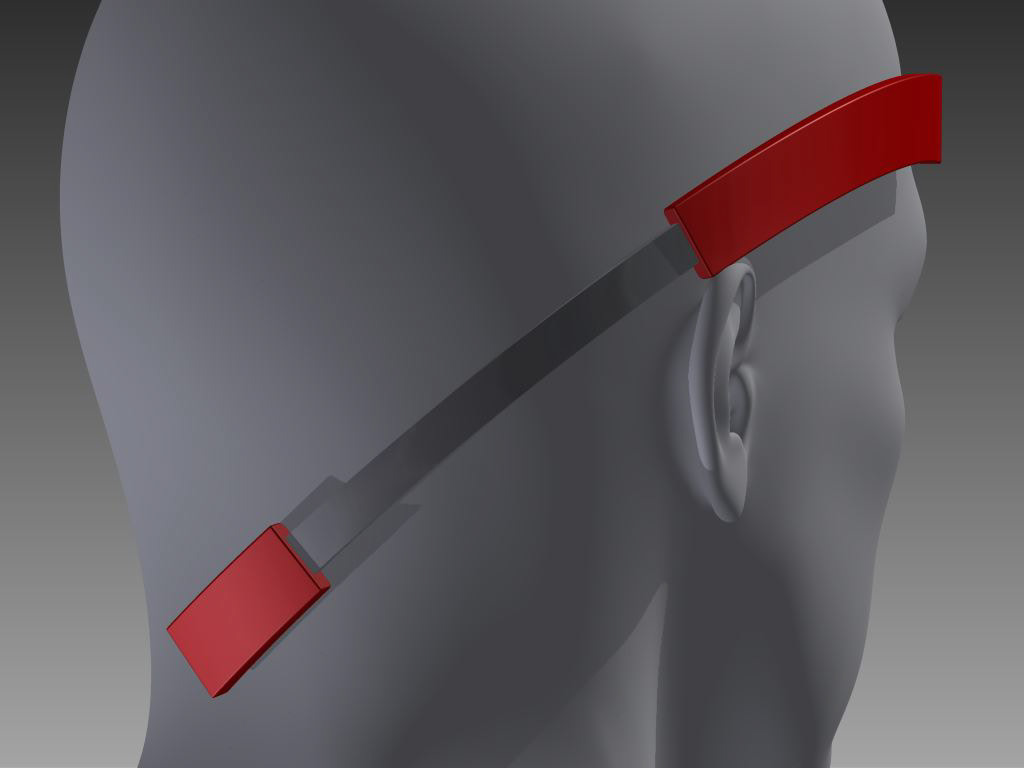

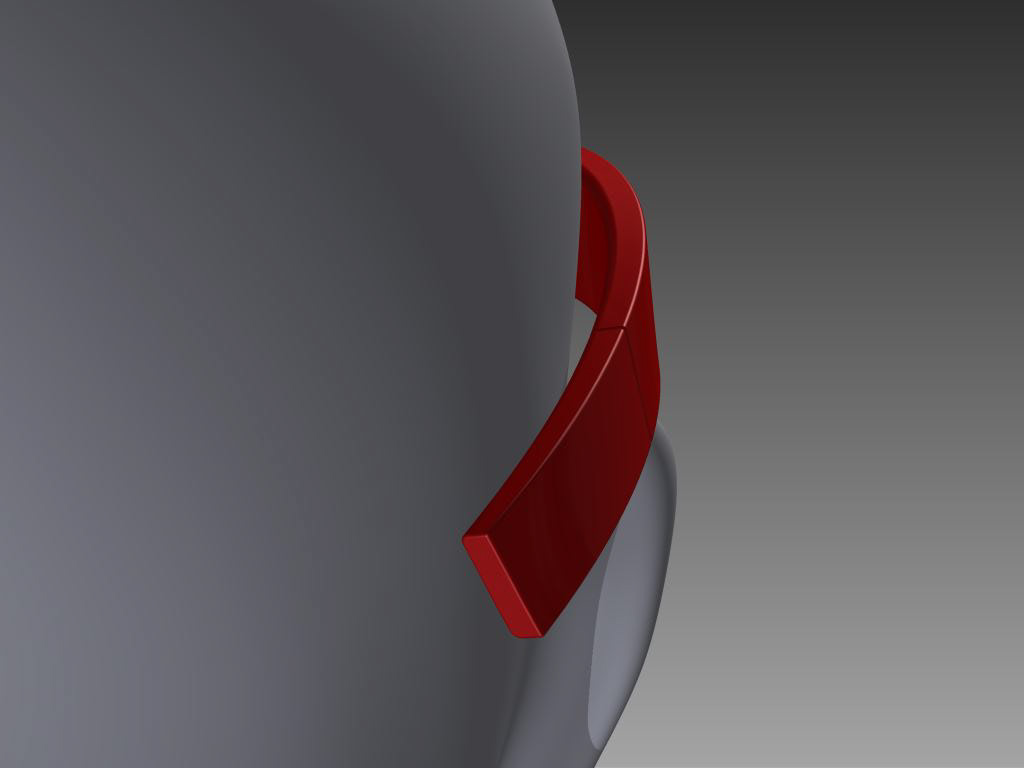
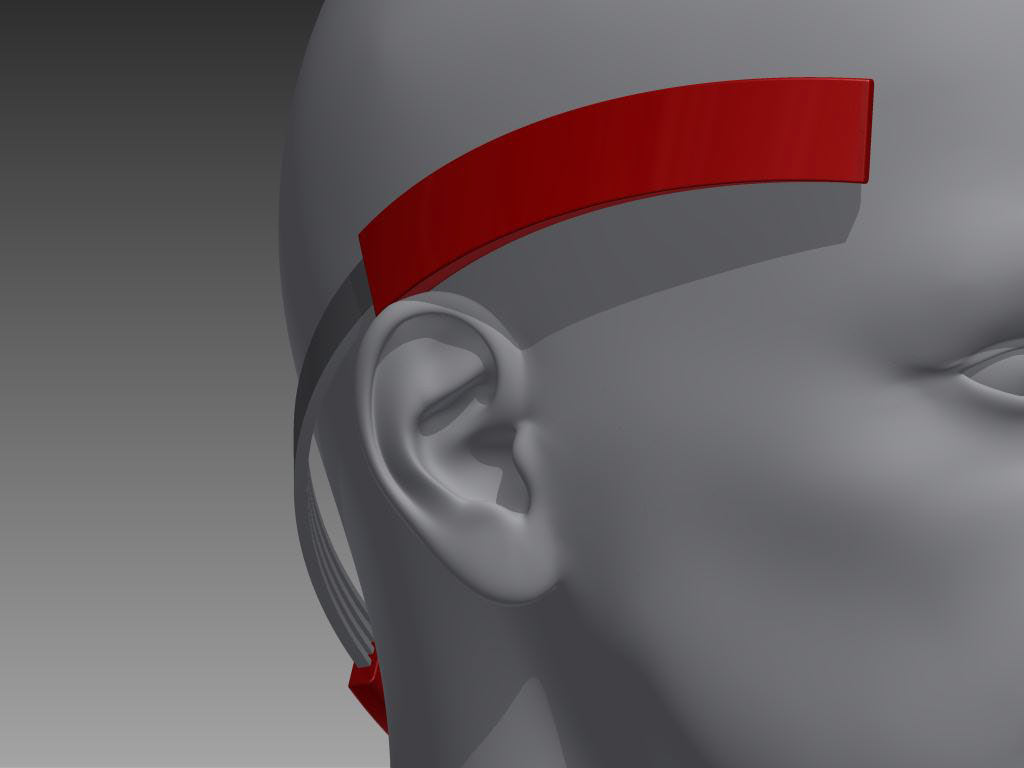



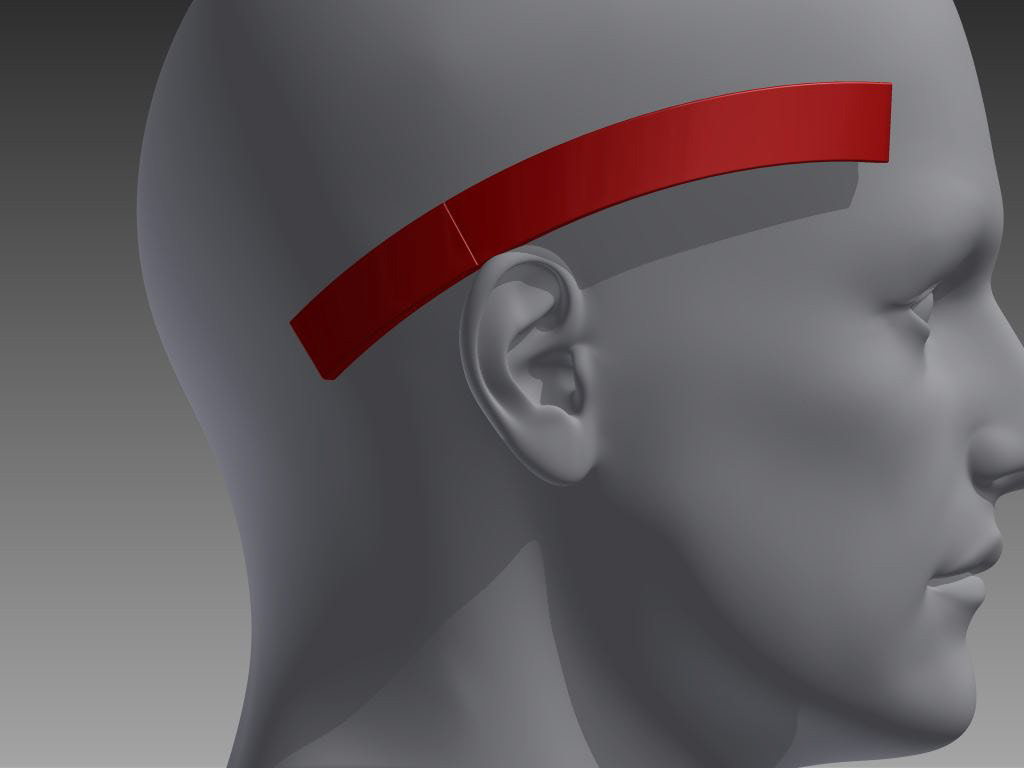

While potentially viable, the concept was greatly simplified over time. Rather than use a rigid, mechanical sliding action, a far more elegant solution would be to use a flexible extension to the body. This would also allow more space to house the components. Ultimately this created a far more attractive product. Basic illustrations conveyed how the product would be worn, engineered, and marketed.




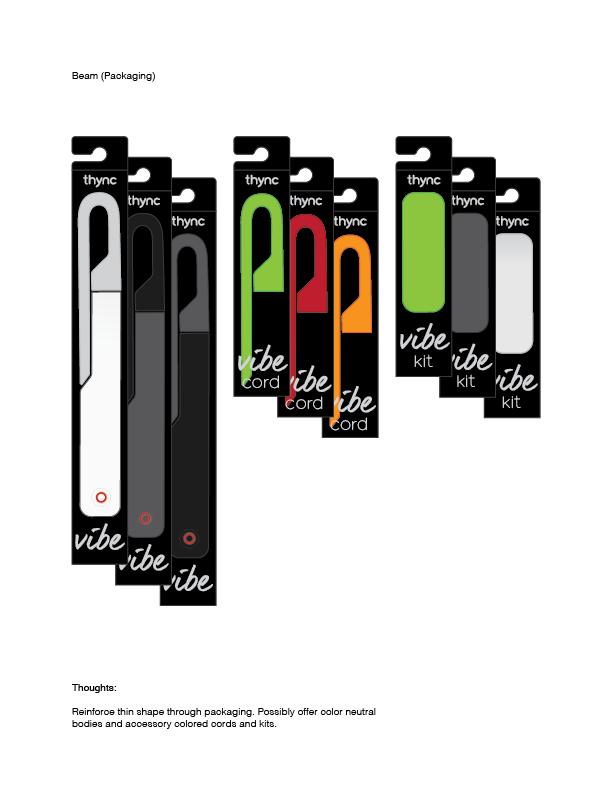
The 2D concept drawings were then explored in 3D and modeled to different sized head forms to verify scale.





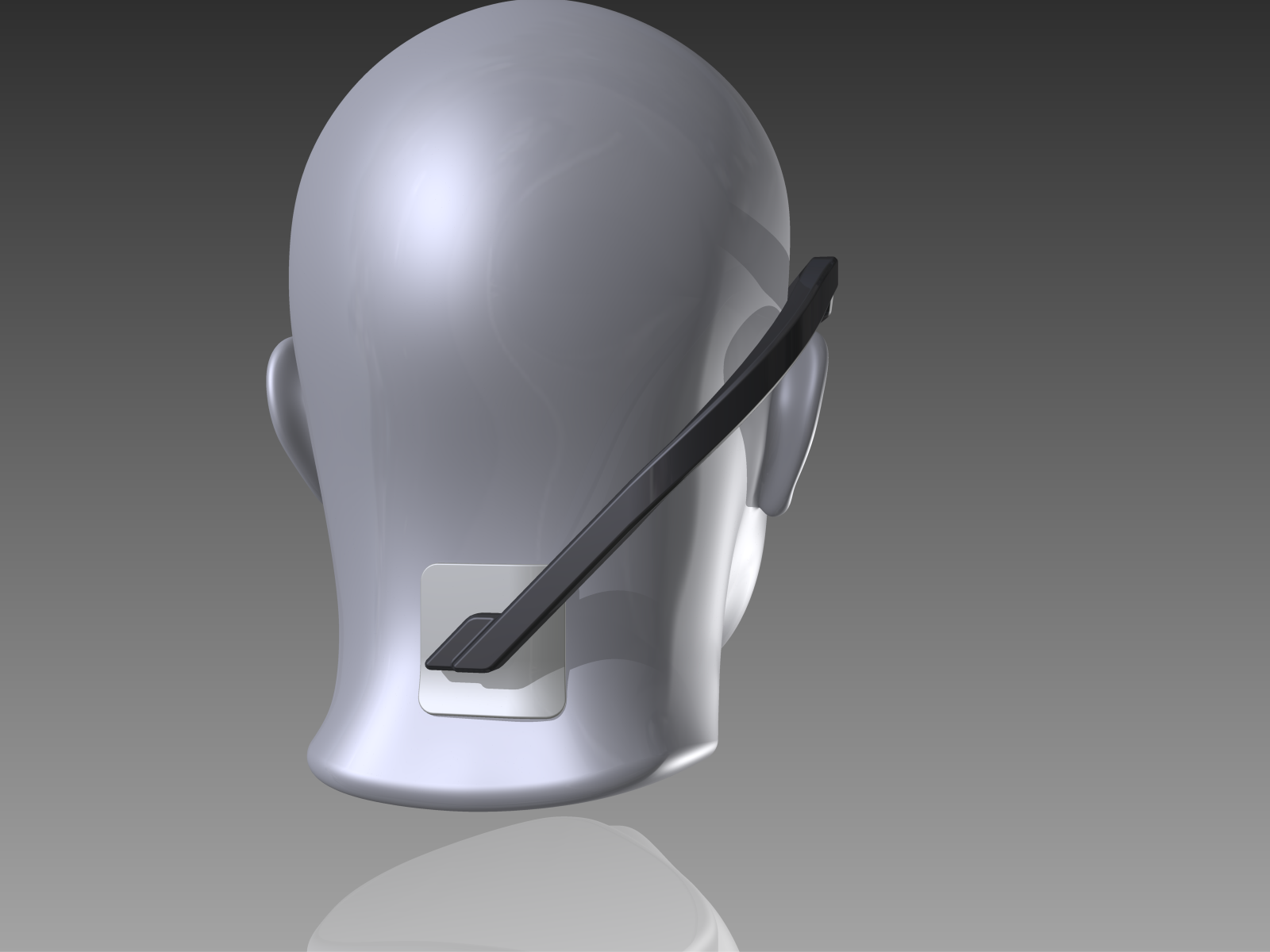
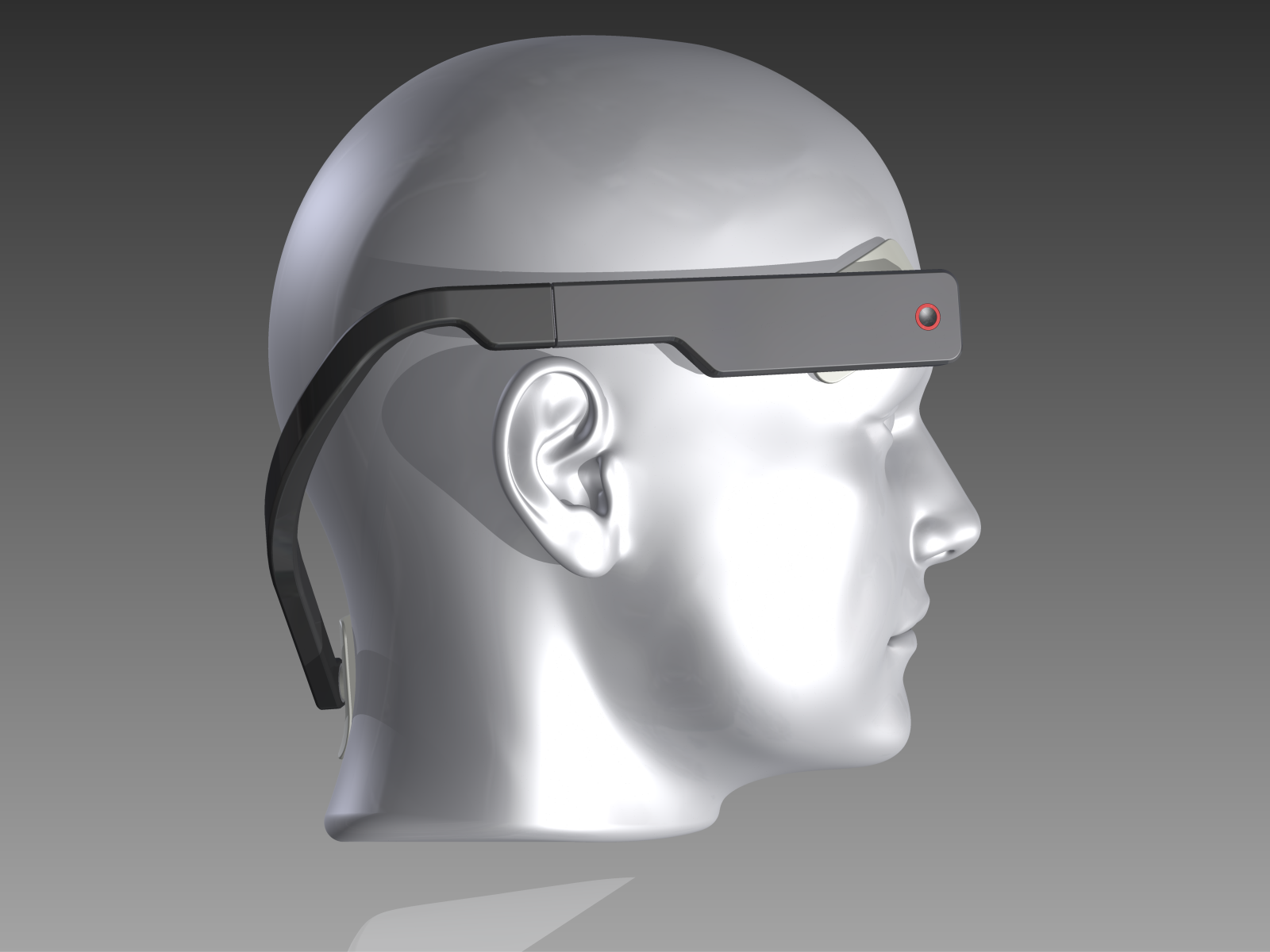

At the time, this was seen as what would be the second generation of the product. In the meantime what was learned was that market demand was greater for the relax/focus use. Lab testing continued and it was learned that back of the neck stimulation was sufficient to achieve the desired effect. As a result, version one was retained and is currently worn on the back of the neck as shown in the video at the top of the page. In other remarkable developments, a user contacted Thync and revealed that use of the product had dramatically improved his psoriasis. Trials are currently under way and show great promise in treating this condition.
